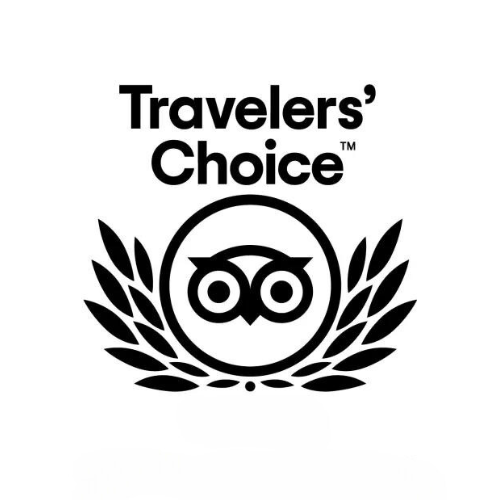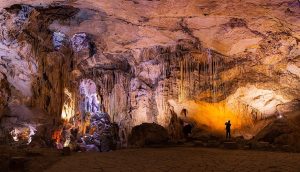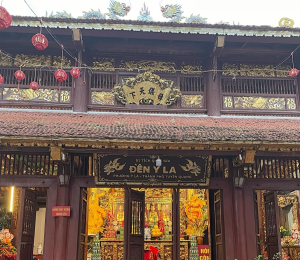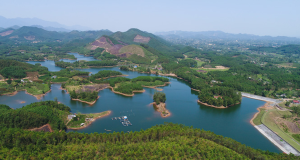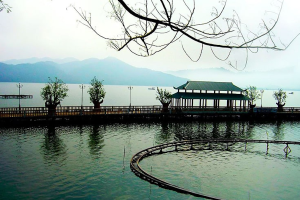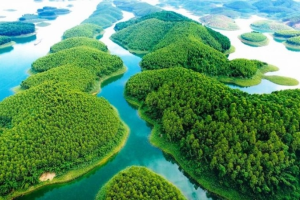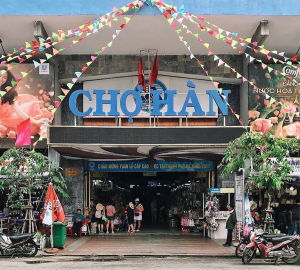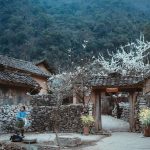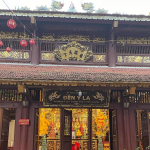
Explore the magnificent Hue Imperial City, a UNESCO World Heritage Site and a testament to Vietnam’s rich imperial history.
The Imperial City Hue represents the grand complex of magnificent palaces, shrines, and tranquil gardens; it is a magnificent reminder of the imperial times of Vietnam. Situated in the middle of Hue, the country’s ancient capital, this UNESCO World Heritage Site promises an engrossing excursion back to the times of the Nguyen Dynasty, the last imperial dynasty of the country.
What is Hue Imperial City?

Citadel Hue Vietnam is the best-preserved royal relic in Vietnam, standing for centuries of time and war but still retaining its architectural splendor. The imperial citadel in Hue symbolizes a pretty unique combination of Eastern and Western military architectural styles, with combined French fortress designs and traditional principles of yin-yang and Five Elements. The city has the ancient tombs of Nguyen emperors, which are designed in accordance with nature based on feng shui principles.
Within its walls, Hue Royal Antiquities Museum protects an enormous collection of precious historic artifacts, representative of the feudal era in Vietnam. The Imperial City is also a place where important national festivals take place, allowing guests to observe how ceremonies were held in the royal court. Besides this, in the imperial citadel of Hue, anyone coming here can also enjoy Hue Royal Court Music, recognized by UNESCO as an intangible cultural heritage, representative of the greatness of Vietnam’s imperial traditions.
Hue Imperial City entrance fee:
- Adults: 200,000 VND
- Children (aged 7 to 12): 40,000 VND
- Tourists also have the option to use Hue Imperial City guide services for an additional cost of 150,000 VND per guide.
Note: The fee can be changed at time. Please contact or access the office website of Hue imperial palace. You can know the fee for the Hue imperial city ticket office correctly.
Hue citadel opening hours:
- In summer: 6:30 AM – 5:30 PM
- In winter: 7:00 AM – 5:00 PM
History of Hue Imperial City

In 1802, Hue was declared the capital of a united Vietnam by Emperor Gia Long, who transferred power from Thang Long (Hanoi). Inspired by Confucian principles and Chinese statecraft, Gia Long commissioned a palace complex similar to Beijing’s Forbidden City. Constructed in 1803, the huge Citadel had thick walls, and a protective moat, and was oriented toward the Perfume River. Enclosed within these protecting walls was the Imperial City, which was, until the arrival of the French protectorate in the 1880s, the center of political and cultural authority. In 1945, Hue’s importance further receded with the abdication of Emperor Bao Dai, the last of the Nguyen dynasty . The 20th-century wars badly affected the Imperial City.
Heavy losses occurred during the First Indochina War when the Viet Minh briefly took the Citadel in 1947; the French counterattack saw much of the core structures burned to the ground. Further damage was done during the 1968 Tet Offensive, with fierce urban warfare between U.S. Marines, South Vietnamese, and North Vietnamese forces that devastated many historic buildings, leaving only a few surviving. Regardless of that fact, Hue’s historic legacy lived on, and the Complex of Hue Monuments became a UNESCO World Heritage site in 1993; it still undergoes restoration to this day to preserve the remaining structures.
What to see in Hue Imperial City?
At the Hue Vietnam Citadel, tourists enjoy seeing many historical relics that add value to the long history of Vietnam.
1. Ngo Mon Gate
On the South of Imperial Citadel Hue is Ngo Mon Gate, the main entrance to the Forbidden City. This complex structure of architecture has the view of a fantastic castle when seen from afar. The structure leading up to the Five Phoenix Pavilion with a flight of stone stairs presents a breath-taking view. A site not to be missed by any tourist on a sightseeing tour in Hue
2. The Imperial City
The Imperial City is the outer defensive layer. Hue Citadel – The enclosure of the royal residential and administrative areas of the imperial city of Nguyen was also the ancestral altar for the deceased emperors.
The Imperial Citadel Hue Vietnam construction was initiated in 1804 by Emperor Gia Long and completed in 1833 during the reign of Emperor Minh Mang. The complex has four main gates. Among those, Ngo Mon Gate is the most important gate in the Imperial City. Inside this complex, some famous constructions are Thai Hoa Palace, Dien Tho Residence, and Hien Lam Pavilion.
3. The Forbidden Purple City
Located in the center of the Imperial Citadel Hue Vietnam, it is called the Forbidden Purple City and was earlier known as the Imperial Enclosure. It was constructed in 1803 and was formally called the Forbidden Purple City in 1821 when Emperor Minh Mang took the throne for the second year. The architecture is a rectangle, and the key entrance has been the Great Palace Gate. Inside are the major structures: the Royal Theatre called Duyet Thi Duong, Can Chanh Palace, Can Thanh Palace, and the historical bronze cauldrons.
Notable historical sites in the Hue Imperial City
1. Quoc Tu Giam (The National Academy)
Quoc Tu Giam, the first national school under the Nguyen Dynasty, was established by Emperor Gia Long in 1803. The academy was originally located about 5 km west of the Imperial City, near the Temple of Literature, on the beautiful side of the Perfume River. In 1908, during the reign of Emperor Duy Tan, the academy moved into the citadel.
2. Long An Palace
Long An Palace was built in 1845 under Emperor Thieu Tri and was part of the Bao Dinh Residence. Now on Le Truc Street in Dong Ba Ward, it also serves as part of the Complex of Hue Monuments. This is a palace that Emperor Thieu Tri would retire to when he wanted to write poems or read books.
3. Hue Royal Antiquities Museum
Long An Palace is the central building of the Hue Royal Antiquities Museum. More than 300 exhibits, including ceramics, gold and jade items, royal robes, medicine tools, and enamelware from the Nguyen Dynasty, are displayed in the museum. Being a part of Hue Imperial City, this museum allows visitors to trace more details about the life of royalty.
4. Tinh Tam Lake
Tinh Tam Lake is one of the most beautiful landscapes in the Imperial City and was built during the Nguyen Dynasty. This rectangular lake features three small islands named Phuong Truong, Bong Lai, and Doanh Chau. Enclosed by the low brick wall, it boasts willow trees along its bank and white lotus flowers bloom on the water surface.
5. Tang Thu Lau (Archive Pavilion)
The Pavilion Archives was built in 1825 on the shores of Hoc Hai Lake for storing official documents from various administrative bodies during the Nguyen Dynasty. It also served as Vietnam’s royal library during that time, with its rare texts, historical records, and governmental documents.
6. Vien Co Mat – Tam Toa (Secret Council – Three Offices)
It is located in the southeastern part of Hue Imperial City. It used to be an advisory body of the emperor that included four senior officials with the rank of third-class Mandarin and above. The responsibility for the Grand Secretariat was assigned to these letters including Van Minh, Dong Cac, Can Chanh, and Vo Hien Palaces. Currently, the complex hosts the Center for the Conservation of Hue Monuments.
7. Xa Tac Altar
Constructed by Emperor Gia Long in 1806, this altar is consecrated to the land and agriculture deities. Ceremonies were conventionally conducted here: in the spring and autumn. For constructing the altar, soil from every region of the nation was called upon. Thereafter, this sandy red-colored altar includes two square stages arranged in tiers along with two rectangular blocks having shallow walls on one side with an attached lotus pond right at the front face, considered the symbolic waterbody.
8. The nine holy Cannons
Of the incredible artifacts in Hue Imperial City, nine holy cannons cast in 1803 by the best craftsmen of Hue, under Emperor Gia Long, speak volumes about an emperor’s triumph over the Tay Son Dynasty. It took an entire year to cast, but they are well-preserved, important historical remnants.
9. The Citadel Bastions

Along the outer walls, the Hue Citadel is reinforced with a system of bastions. More than 11 km in length, the bastions were set in series and equipped with gunports, storehouses of ammunition, and workshops for preparing arms. There are 24 bastions in all, each named according to one of the four cardinal directions: East, West, South, and North.
Activities and experiences at Hue Imperial City
Besides the prominent sightseeing spots, Hue offers visitors immersive travel experiences that they cannot forget.
1. Walking around Hue Citadel

Hue Imperial Citadel Vietnam is the iconic symbol of the Nguyen Dynasty and reflects the extensive history and architecture of bygone Vietnam. You will surely feel spellbound while taking a stroll around this vast complex, comprised of amazing edifices like Ngo Mon Gate, Thai Hoa Palace, and strong walls.
Inside the citadel, the feeling is quiet, while the whole city is bustling outside. The chirping of birds with the relics of the past enacts magic with every step. You can enjoy this historical place with family, friends, or a lover, capture many memorable moments in pictures, and always cherish them.
Bring some water and snacks along to keep up your energy levels. Do not forget your camera to capture some of the breathtaking views of this Hue historic citadel to share in all your social circles to preserve the memory of it.
2. Trang Tien Bridge visit

Trang Tien Bridge represents Hue with a historic wooden bridge across the Perfume River, characterized by classic architectural features. When walking over this bridge, you can contemplate how perfectly man-made beauty harmonizes with nature: the river flowing softly beneath its arches.
Visiting Trang Tien Bridge at sunset with your loved one is truly captivating. The golden hues reflected on the water make it a perfect romantic setting, like stepping into a poetic masterpiece.
3. Enjoying Hue royal music on the Perfume River

This serene boat trip will take you along the Perfume River, where tranquil views will be enjoyed amidst traditional Hue royal music subtly and sweetly filling your ears with professionally presented sounds from traditional instruments exuding tones of dignity, elegance, and intimacy.
This cultural experience is perfect for sharing with parents or grandparents, allowing them to relive cherished memories of the past. As the melodies drift over the water, you’ll gain a deeper appreciation for Vietnam’s heritage and the enduring beauty of its traditional music.
4. Exploring Hue by cyclo at night

If walking feels like a chore at the end of a long day, then Hue is equally good on a night-time cyclo ride – comfortably seated, you can view the city sights and sounds with the golden glow of streetlights reflecting off the Perfume River.
They are more than just drivers; they are storytellers who will enlighten you with interesting stories of Hue’s history and culture. Their hospitality is personal as the tour takes you past landmarks such as Trang Tien Bridge, ancient houses, and charming cafes, painting a picture of Hue with its timeless charm.
5. Explore Hue railway station

Hue Rail Station is much more than a hub of transportation; it is a place where you find nostalgia and quiet contemplation. Contrasting to the jostling crowds of a bus terminal, the station exudes tranquility, urging one to appreciate things with slowness, from an older era.
It is characterized by spacious hallways where the old brick walls, classical French architecture, and gentle breeze from the Perfume River combine with the soft hum of rolling trains on the tracks. Visiting here gives you a feel of Hue’s slowness, a more contemplative pace of life that is seldom captured.
Read more: Hon Ba Island: A paradise awaits
FAQs
Don’t forget one of the most important parts, exploring the answer for FAQs!
How much time should I allocate for visiting the Hue Imperial City?
At least half a day, but a full day is recommended to explore the complex thoroughly and at a relaxed pace. Rushing through would mean missing many of the intricate details and hidden corners.
What is the best time of year to visit Hue Imperial City?
Hue experiences a tropical monsoon climate. The dry season (roughly from March to September) is generally considered the best time to visit, with less rainfall and more sunshine. However, it can also be very hot, so consider visiting during the shoulder seasons (spring or autumn) for milder temperatures.
Are there dress code restrictions for visiting Hue Imperial City?
While there isn’t a strict formal dress code, it’s respectful to dress modestly, especially when visiting temples and religious sites within the complex. Covering shoulders and knees is advisable. Comfortable walking shoes are a must, as you’ll be doing a lot of walking.
Hue Imperial City is a grand statement of the imperial past of Vietnam, with a fascinating look into the Nguyen Dynasty and the rich cultural heritage of the nation. From sprawling palaces and ornate temples to beautifully landscaped gardens and historical significance, Hue Imperial City is a truly immersive experience. Ranging from the Imperial Citadel’s grandeur to delving into the history of the Forbidden Purple City, or simply strolling through the serene courtyards, a visit to Hue Imperial Citadel is indispensable in any journey to Vietnam. Wherever history comes to life, the architecture speaks volumes of the emperors and dynasties, while the spirit from the imperial past reverberates with people both far and wide. Plan for a visit now and discover what magic Hue Imperial City has on its own.
Embark on an extraordinary Vietnamese journey with Lily’s Travel! A trusted name in travel for 15 years, Lily’s Travel boasts over 2000 glowing five-star reviews on TripAdvisor, consistently ranking among the best tour operators in Hanoi and Northern Vietnam. Since 2007, we’ve been driven by a passion to unveil the true beauty of Vietnam to the world, crafting exceptional tours that span Vietnam, Laos, and Cambodia. More than just sightseeing, Lily’s Travel specializes in immersive cultural explorations, delving into the diverse tapestry of religions, ethnicities, and regional traditions. Inquire now and let Lily’s Travel create your perfect Vietnam experience!
Read more: Long Hai Beach: Vietnam’s coastal retreat

